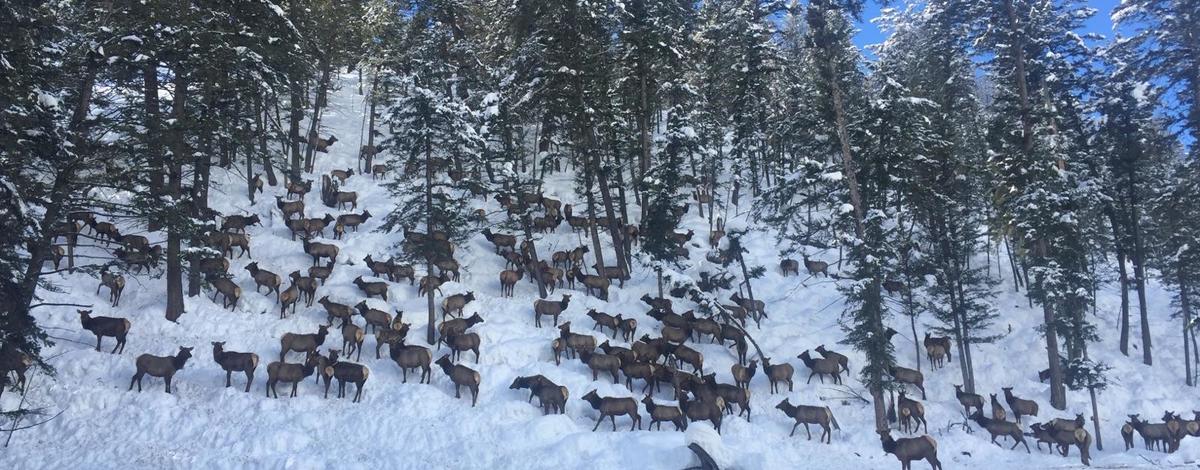History
The Southwest Region has a long history of big game winter feeding efforts. The Winter Feeding Advisory Committee, made up of several citizen volunteers, met on January 9th to review current winter conditions and evaluate the need to declare a winter feeding emergency based on factors outlined in Fish and Game rule and policy as per IC36-123. The last emergency winter feeding operation was conducted in the winter of 2007/2008, when elk and deer were fed because of severe winter weather conditions in Garden Valley and the Lowman area.
January 9, 2017 status report
The Southwest region winter feeding advisory committee met the evening of January 9. In preparation for a winter feeding effort, Fish and Game staff plowed access to a feed storage site in Garden Valley where 20 tons of elk pellets are stored. Another 20 tons of deer pellets and 10 tons of elk pellets have been ordered. In addition, seven tons of deer pellets are available at another location. In the event that a winter feeding effort is initiated, Fish and Game staff are preparing (plowing out) historic feed sites along the South Fork of the Payette River between Garden Valley and Eight Mile Creek.
Staff are gearing up for a possible second emergency feeding operation at Boise River Wildlife Management Area (WMA). On Monday, January 23, a bulldozer will be used to prepare a feed line above the Boise River's headquarters compound should a winter feeding emergency be declared. A portion of the pellets noted above will be used for this feeding effort.
Snow in the Southwest Region has concentrated significant numbers of elk in some areas, including the Weiser River Valley where elk are wintering on and adjacent to agricultural fields and hay stacks, but the animals are not currently at risk of significant nutritional-based mortality. Depredation complaints are high and Fish and Game staff are busy responding to concerned landowners about depredating elk.
The Weiser Zone's elk population is more than 3,200 animals over management plan objective. Because of this, the preferred methods of mitigating elk depredations and winter mortality include protecting hay stacks and allowing hunter harvest of animals that might otherwise perish from winter conditions. Fish and Game has significantly increased elk permits in the Southwest Region to remove elk and haze other animals away from private property. An elk depredation hunt with 400 permits was recently established targeting elk in the Weiser River Valley in an attempt to address chronic elk depredations. Southwest region staff secured a competitive grant to radio collar several elk in this area, in an effort to better understand their movements and focus fall harvest on animals likely to winter on private lands.

